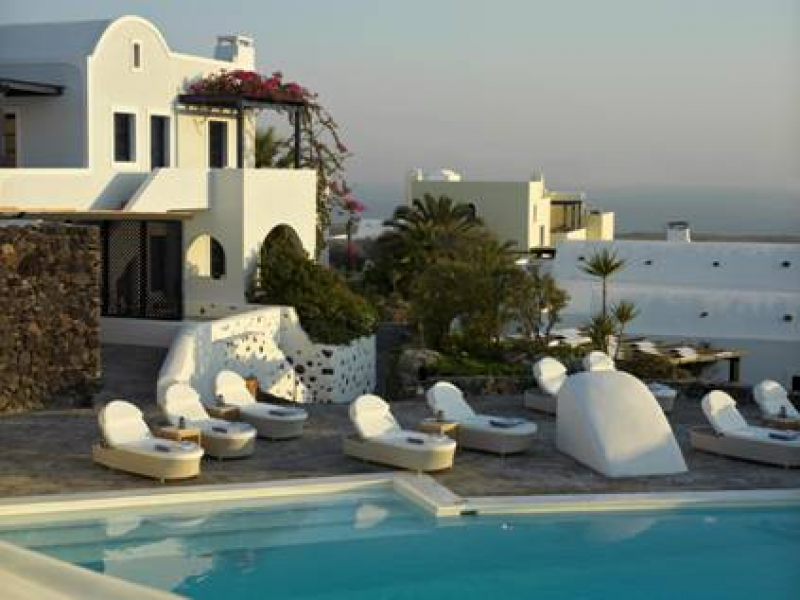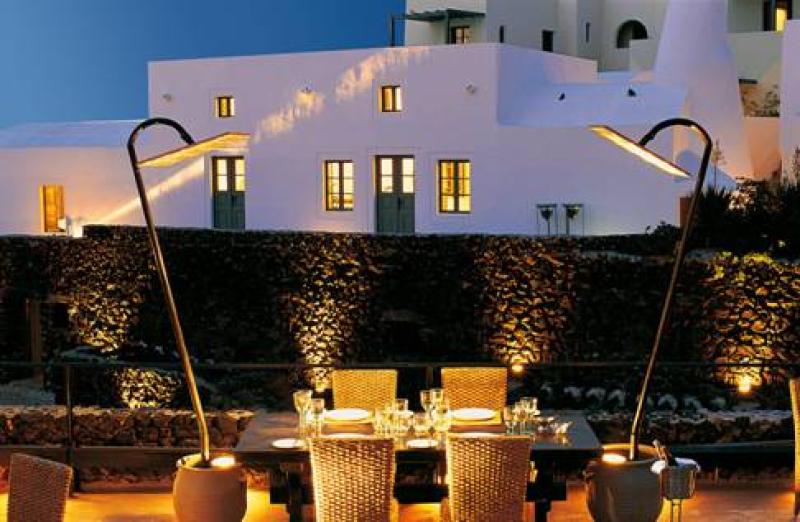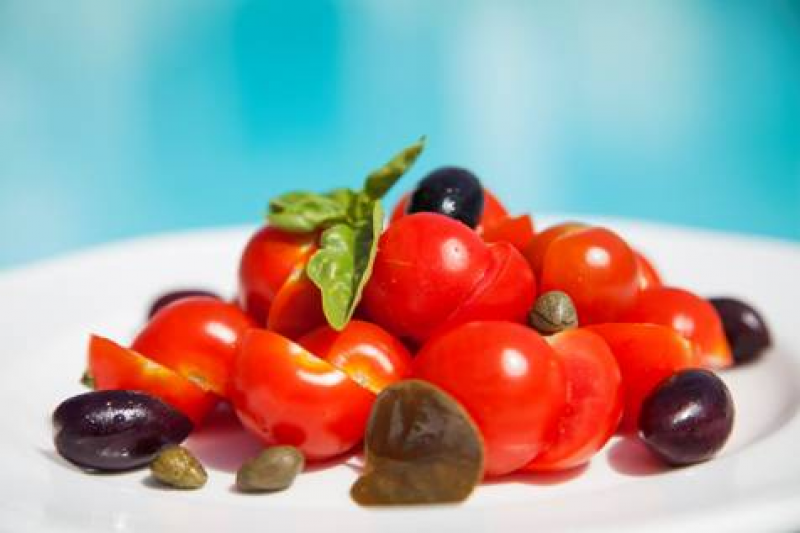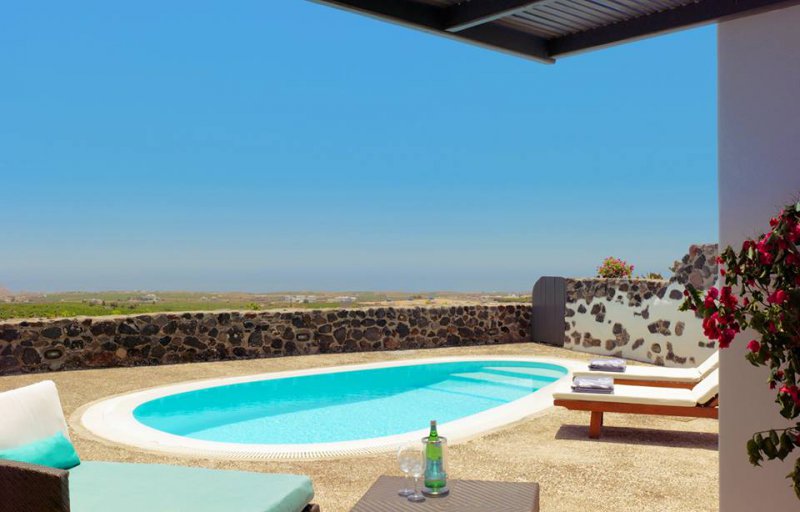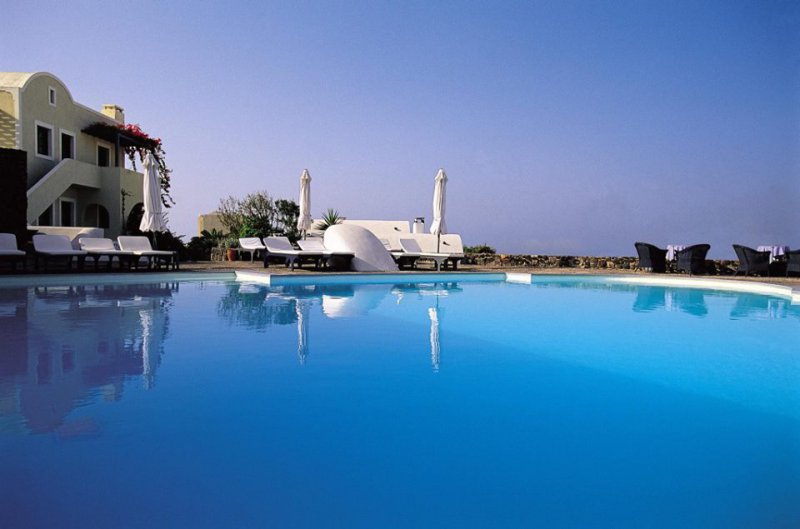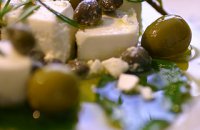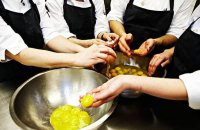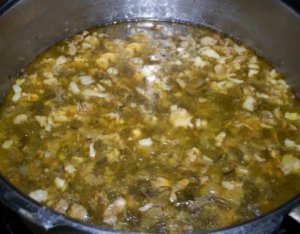If you happen to be visiting the ultimate Mediterranean culinary destination that is Santorini between now and July 7, make sure to book a fabulous poolside lunch or atmospheric medieval chic dinner under the stars at Vedema, A Luxury Collection Resort, and join in the celebration of the island’s 2013 Year of Gastronomy.
Between June 17 and July 7, the swish yet laidback, family-friendly resort - that marks its 20th anniversary this year - is taking part in Santorini’s 2013 Year of Gastronomy with cooking classes, enticing restaurant menus, a seed exchange event and rejuvenating spa treatments, among other activities.
This summer, Vedema - situated in the authentic medieval village of Megalohori - is tracing Santorini’s culinary evolution from ancient times to today, and revealing the uniqueness of the island’s products, from its small-scale farmed fruit, vegetables and legumes to the aromatic, crisp white wines discreetly snapping up awards across the globe.
Inspired by lost ancient recipes and the archaic settlement of Akrotiri, Vedema’s talented executive chef Melina Chomata has designed an exclusive series of innovative, neo-Greek lunch and dinner menus based on the island’s unique products sourced from the resort’s own estate as well as local farmers, in line with the property’s zero carbon emission and 100-Mile Diet policies.
These special menus, whose focus will be a single characteristically native product that changes each day, are to be offered in addition to the customary dishes available at lunch in the resort’s laidback Pergola restaurant and at dinner in Vinsanto, Santorini’s quietly elegant dining destination of choice, accompanied by a select list of locally-produced wines. Indeed, many globe-trotting foodies in the know have yet to discover this unassuming epicurean’s dream hidden within the volcanic stone walls of a 400-year-old winery, that has a rooftop terrace to boot.
Chomata has carefully crafted special five-dish menus each of which will focus alternately on Santorini’s famed fava bean, one-of-a-kind white eggplant, cherry tomato, zucchini, capers and sweet Vinsanto wine. Among the signature dishes to feature is tender octopus prepared with local Assyrtiko wine accompanied by a salad dressed with almonds and a garlic-tahini sauce – a truly divine pairing of Mediterranean flavors. Proof that simplicity often lies at the heart of gastronomic brilliance can be found in her fava bean soup with peanuts grown on the island and a dash of Vinsanto wine.
Vedema’s sommelier will conduct daily wine-tasting lessons for guests at the cool, seemingly subterranean restored catacombs that house Canava Bar, while a specially-designed cocktail list featuring liquid concoctions infused with herbs collected from the surrounding hills and other local products should also prove tempting.
For resort guests interested in learning about what the island’s home cooks serve up on the family table and trying their hand at traditional Santorini recipes, cooking classes will be held each day in Vinsanto’s kitchen between 11am and 2pm.
On June 22, Vedema hosts an informative by-invite-only, environmental awareness-raising seminar titled “Hand to hand, from one generation to the next”, at which Panagiotis Sainatoudis, founder of the non-profit Peliti organization, will speak about the importance of collecting, preserving and disseminating local seed varieties. He will distribute seeds of traditional Santorini products to seminar attendees. That evening guests can choose to attend a buffet dinner of dishes prepared by a local women’s cooperative at Pergola restaurant.
Meanwhile, the experienced team at the resort’s Asian Spa will be pampering guests with a special range of revitalizing beauty and wellness treatments incorporating indigenous ingredients, such as a deliciously relaxing honey massage and a face-brightening Greek yogurt and cucumber mask.
There’s nothing like relishing a regional cuisine at its geographical heart and those who choose to stay at Vedema this summer will understand why Santorini’s simple yet sophisticated gastronomic traditions have traveled well beyond the caldera cliff edge to culinary capitals like New York City, London and Melbourne.














































